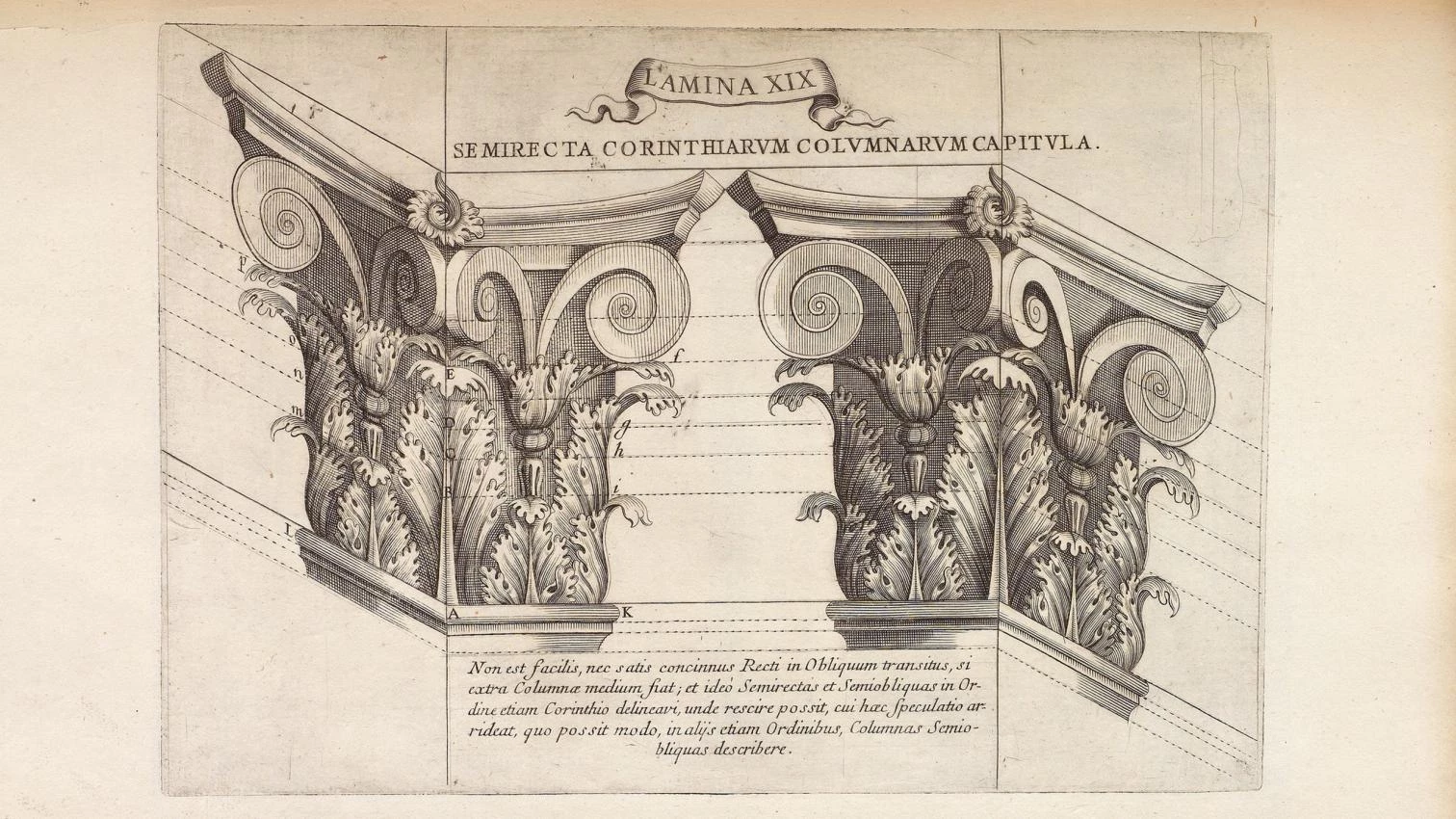
This book presents the architectural thinking of Juan Caramuel Lobkowitz (Madrid, 1606–Vigevano, 1682), writer on many subjects, theologian, mathematician, supporter of New Science from the angle of his philosophical probabilism, which he presented in Architectura civil, recta y obliqua… (Vigevano, 1678), the most ambitious treatise written up to then in Spanish.
Homo viator through Europe, Caramuel discoursed on the discipline in terms of the cultural preoccupations of his time. As Fernández-Santos states to explain the treatise’s “invasive erudition,” architecture for Caramuel was not just a number in the list of disciplines he tackled. It is this forma mentis of the treatise writer towards which his analysis of Caramuel’s architectural ideology is headed.
The author talks about Caramuel’s fascination with the stereotomy reasoned out in ‘scientific canons,’ elevating El Escorial to the status of a modern architectural paradigm. With a radical modern concept of the classical language, contrary to maintaining the authority of Vitruvius or the declination of the orders devised in the Renaissance, Caramuel expanded the corpus of architectural orders, complementing the five orders sanctioned by the classical canon with new ones.
The theoretical gestation of the oblique architecture that together with straight architecture gave Caramuel’s treatise a title formed an idiolect in Baroque architectural culture. The geometric expression of the oblique, brought to the language of orders and to the morphology of classical architecture, was a key theme of his treatise. In illustrating obliquities, Caramuel was aware of his inquiries into ‘visual experimentalism,’ into the importance of eyes in judging architecture, and even into the plates that lent themselves to being seen “with eyes, with no need for any discourse.”
His axioms on obliquity were criticized in the Rome of Alexander VII. In the same way, in the final years of his life Caramuel sought to substantiate his oblique ideas in the cathedral’s facade, optically providing the irregular trapezoid of St. Peter’s Square by means of an elliptical section with oblique registers, and placing a doorway in the facade’s far curved side.
Fernández-Santos consolidates the path opened in the historiography of Spanish architecture by the studies that Antonio Bonet Correa and Juan Antonio Ramírez conducted on Caramuel, parallel to those carried out by Oeschlin on the reception of his work in Guarino Guarini, or by Marino on the echo of Caramuel’s ideas in the creation of the colonnade at St. Peter’s. The 1984 facsimile printing by Bonet of Architectura civil recta y oblicua contributed to historiographically socializing his work. An expression of a cultural simultaneity, this reemergence of Caramuel’s work comes years after what in 1964 Virilio and Parent defined as fonction oblique, a non-conformist attitude against orthogonality without fissures, and also after Eisenman’s bid for oblique axonometries in favor of an eminently syntactic study of architectural form.






